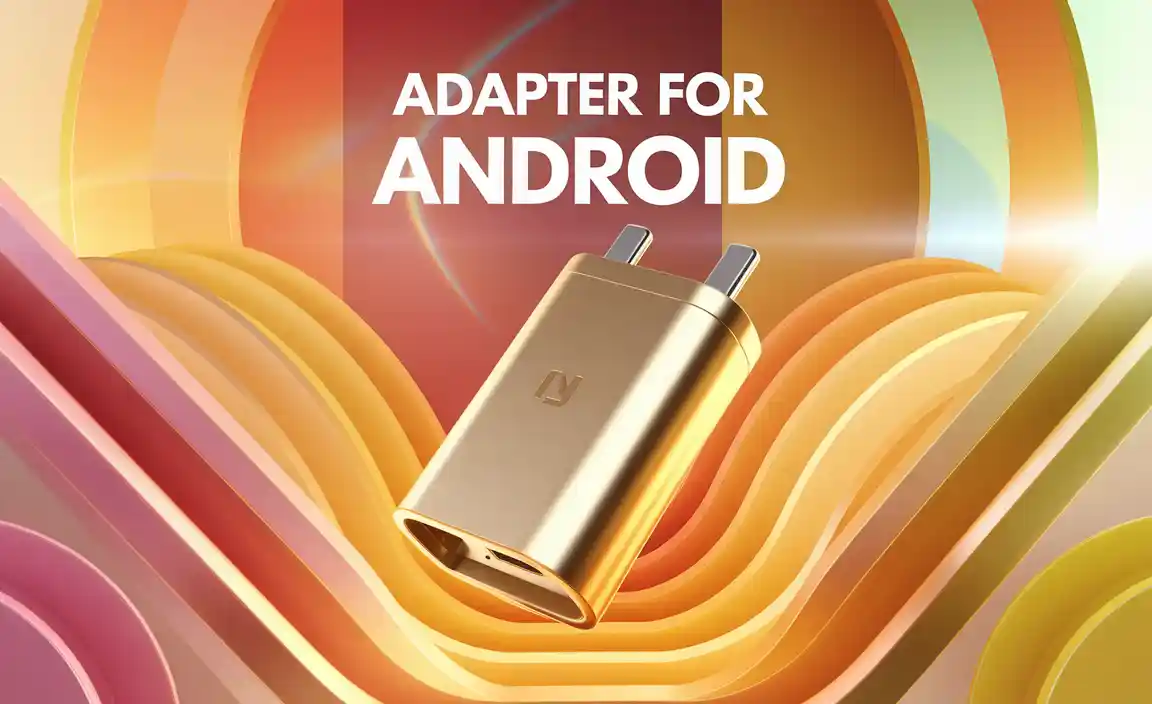The right battery for your backhoe is key for heavy-duty work. A reliable battery ensures consistent power, vital for digging, lifting, and moving earth. Choosing the correct battery means less downtime and more productivity on the job.
Heavy machinery like backhoes need serious power to get tough jobs done. When your backhoe’s battery isn’t performing, it can bring your whole project to a standstill. This can be super frustrating, especially when deadlines are looming. But don’t worry, finding the right power source for your backhoe doesn’t have to be a headache. We’ll walk you through everything you need to know, from understanding what makes a good backhoe battery to making sure you get the perfect fit. Let’s get your powerful machine ready to work!
Understanding Your Backhoe’s Battery Needs
A backhoe isn’t like your car; it’s a workhorse designed for demanding tasks. This means its battery needs to be robust and dependable. Unlike a car battery that primarily starts an engine and powers accessories, a backhoe battery has to handle repeated starting in tough conditions, power on-board electronics, and sometimes even auxiliary equipment. The right battery ensures your machine starts reliably, even on cold mornings, and keeps running when you need it most.
Several factors determine the ideal battery for your backhoe. These include the machine’s make and model, its typical operating conditions, and the specific electrical demands of its systems. Getting this right is crucial for maximizing performance and avoiding costly breakdowns in the field. Think of the battery as the heart of your backhoe’s electrical system – it needs to be strong and healthy!
Key Battery Specifications for Backhoes
When you’re looking for a new battery for your backhoe, you’ll notice a few key specs that stand out. These numbers tell you how powerful and reliable the battery is for its intended purpose. Understanding these specs will help you make an informed choice.
- Cold Cranking Amps (CCA): This is a measure of how much power a battery can deliver in cold temperatures to start an engine. For heavy equipment like backhoes, especially if you work in colder climates, a higher CCA rating is generally better. It ensures your backhoe can start even when it’s freezing outside.
- Reserve Capacity (RC): RC tells you how long a fully charged battery can supply a certain amount of power (usually 25 amps) before its voltage drops too low. A higher RC means your battery can run essential accessories for longer if the alternator isn’t keeping up, which is important during busy workdays.
- Voltage: Most backhoes use a 12-volt system, just like many cars. However, some larger or specialized equipment might use a 24-volt system, often achieved by connecting two 12-volt batteries in series. Always check your backhoe’s manual to confirm its voltage requirement.
- Battery Type: Deep-cycle batteries are often preferred for heavy equipment because they are designed to be discharged more deeply and more often without significant damage, unlike starting batteries which are meant for short bursts of high power.
- Terminal Type and Placement: Ensure the terminals (where you connect the cables) match your backhoe’s cables. Also, check that the battery will physically fit into the battery tray and that the terminals are positioned so the cables reach comfortably without being over-stretched.
Why Your Backhoe Needs a Heavy-Duty Battery
Backhoes are built to withstand tough conditions and perform demanding tasks. They operate in environments that can be dusty, bumpy, and exposed to extreme weather. This means the battery needs to be just as tough. A standard car battery simply won’t cut it.
A heavy-duty battery for a backhoe is designed with:
- Robust Construction: They often have stronger casings to resist vibration and shock, which are common on job sites.
- Thicker Plates: The internal plates are usually thicker and more durable, allowing for deeper discharge cycles.
- Higher Power Output: They deliver the substantial amperage needed to crank powerful diesel engines and run complex hydraulic systems.
- Vibration Resistance: Special internal components help the battery withstand the shaking and rattling that comes with operating heavy machinery.
Choosing a battery specifically designed for heavy equipment ensures it can handle the demands of your backhoe, leading to better performance and a longer lifespan for the battery itself.
Choosing the Right Battery for Your Backhoe
Selecting the perfect battery for your backhoe involves a bit of detective work. You need to match the battery’s specifications to your machine’s requirements. Don’t just grab the closest one off the shelf; a little effort now saves a lot of trouble later.
Consult Your Backhoe’s Manual
The absolute best place to start is your backhoe’s owner’s manual. It will precisely state the recommended battery type, group size, voltage, CCA, and RC. This information is tailored specifically to your model by the manufacturer.
If you don’t have the manual handy, don’t stress! You can often find digital versions on the manufacturer’s website. Searching for “[Your Backhoe Make and Model] owner’s manual” should do the trick. You can also check the existing battery in your backhoe; the specifications are often printed directly on it.
Battery Group Size
Batteries come in standardized “group sizes” (like Group 31, Group 65, etc.). This refers to the physical dimensions (length, width, height) and terminal placement. Using the correct group size is crucial because the battery must fit securely in its tray and allow the battery cables to connect properly.
A quick search online for “backhoe battery group size chart” can help you cross-reference your machine’s make and model with common battery group sizes, but always confirm with your manual or the existing battery.
CCA and Reserve Capacity (RC)
As mentioned earlier, Cold Cranking Amps (CCA) and Reserve Capacity (RC) are vital. Aim for a battery that meets or slightly exceeds the manufacturer’s recommendation.
CCA: If you operate in freezing temperatures, get a battery with a higher CCA than the minimum recommended. This will give your engine a better chance of starting when it’s frigid.
RC: For backhoes that run for long hours or have many accessories, a higher RC is beneficial. It provides a buffer if the charging system is under strain.
Deep Cycle vs. Starting Batteries
Most backhoes, especially those with complex electrical systems or that are used for extended periods, benefit from deep-cycle batteries. These batteries are designed to deliver power steadily over a long time and can handle being discharged significantly without damage. Starting batteries, common in cars, are designed for short bursts of high power to crank an engine and can be damaged by deep discharges.
However, some backhoes might specifically require a high-performance starting battery. Always refer to your manual to be sure. If you’re unsure, a deep-cycle or a dual-purpose battery (designed for both starting and deep discharge) is often a safe bet for heavy equipment.
Brands and Quality
When it comes to heavy machinery, brand reliability matters. Look for reputable brands known for producing durable batteries for industrial or commercial applications. Some well-regarded brands include:
- Exide
- Interstate Batteries
- Odyssey Battery
- ACDelco
- Optima
While these might have a higher upfront cost, their longevity and performance can make them more cost-effective in the long run. Always check reviews or ask experienced operators for their recommendations.
Replacing Your Backhoe Battery: A Step-by-Step Guide
Replacing a backhoe battery might seem intimidating, but it’s a manageable DIY job if you take your time and follow safety precautions. Safety first is always the motto when working with batteries.
Safety First!
Batteries contain sulfuric acid, which is corrosive, and they can produce flammable hydrogen gas. Always:
- Wear safety glasses and heavy-duty gloves.
- Work in a well-ventilated area.
- Keep sparks, flames, and cigarettes away from the battery.
- Ensure the engine is off and the key is removed from the ignition.
- Never smoke while working with batteries.
- Know where to find a first aid kit in case of acid exposure.
Tools You’ll Need
Gather these tools before you start:
- Your new backhoe battery
- Wrench or socket set (to fit battery terminal and hold-down bolts)
- Wire brush or battery terminal cleaner
- Rags or shop towels
- Anti-corrosion spray or grease (optional)
- Battery terminal puller (if terminals are stuck)
The Replacement Process
Follow these steps carefully:
- Locate the Battery: The battery is usually found under the hood or in a designated compartment on the backhoe. Open the compartment.
- Disconnect the Old Battery: This is the most critical step for safety. ALWAYS disconnect the NEGATIVE (-) terminal first. This is usually the black cable. Use your wrench to loosen the nut, then gently twist and pull the cable off the terminal. Place it aside so it can’t accidentally touch the terminal again.
- Disconnect the POSITIVE (+) Terminal: Next, disconnect the POSITIVE (+) terminal (usually the red cable). Use the wrench to loosen the nut and remove the cable.
- Remove the Hold-Down Clamp: Batteries are secured by a clamp or bracket at the base or top. Use your wrench or socket to remove the bolts holding the clamp in place. Keep track of these bolts, as you’ll need them for the new battery.
- Remove the Old Battery: Carefully lift the old battery out of the tray. Batteries are heavy, so use proper lifting techniques or get help if needed. Place it on a sturdy surface.
- Clean the Battery Tray and Cables: Inspect the battery tray for corrosion or debris. Clean it with a rag. Use a wire brush to clean the insides of the cable clamps and the battery terminals on your backhoe if they look dirty or corroded. This ensures a good connection.
- Install the New Battery: Carefully place the new battery into the tray, ensuring it’s oriented correctly so the positive and negative terminals align with the corresponding cables.
- Secure the New Battery: Reinstall the hold-down clamp and tighten the bolts to secure the battery. Don’t overtighten, but make sure it’s snug and won’t move.
- Connect the POSITIVE (+) Terminal First: Place the positive cable clamp onto the positive terminal of the new battery. Tighten the nut securely.
- Connect the NEGATIVE (-) Terminal Last: Place the negative cable clamp onto the negative terminal. Tighten the nut. Connecting the negative terminal last is a safety measure to prevent sparks.
- Apply Anti-Corrosion Protection (Optional): You can spray a thin layer of anti-corrosion spray or apply a thin coat of dielectric grease to the terminals and clamps. This helps prevent corrosion and ensures a good connection over time.
- Test the Backhoe: Close the battery compartment. Get in the backhoe and try starting it. It should crank over and start smoothly. If it doesn’t start or has issues, recheck your connections.
- Dispose of the Old Battery: Never throw old batteries in the trash. They are hazardous waste. Most auto parts stores and places that sell new batteries will accept your old one for recycling. This is often required by law. Check out resources like the EPA’s guidelines for proper disposal.
Maintaining Your Backhoe Battery for Longevity
A little regular maintenance can significantly extend the life of your backhoe’s battery and ensure it performs reliably. Think of it like routine check-ups for your machine.
Regular Inspection
Make it a habit to visually inspect your battery regularly, perhaps weekly or monthly, depending on usage.
- Check for Corrosion: Look for any white or bluish powdery buildup on the terminals and around the cable clamps. If you see it, clean it off using a wire brush and a baking soda/water paste.
- Inspect Cables and Clamps: Ensure the cables are not frayed or damaged and that the clamps are tight on the terminals. Loose connections are a common cause of starting issues.
- Check for Leaks: Look for any signs of leaks or cracks in the battery casing. If you find any, the battery needs to be replaced immediately.
- Ensure it’s Secured: Give the battery a gentle shake to make sure it’s firmly held in place by the hold-down clamp. A loose battery can be seriously damaged by vibrations.
Cleaning Terminals
Keeping the battery terminals clean is one of the easiest and most effective maintenance tasks. Corrosion increases resistance, making it harder for power to flow. Here’s how to clean them:
- Ensure the engine is off and the key is removed.
- Disconnect the negative terminal first, then the positive.
- Mix a tablespoon of baking soda with a cup of water.
- Use a wire brush or an old toothbrush dipped in the solution to scrub the terminals and the inside of the cable clamps until they are clean and shiny.
- Rinse with clean water (be careful not to let water get into the battery vents if it’s a serviceable battery).
- Dry everything thoroughly with a clean rag.
- Reconnect the positive terminal first, then the negative terminal.
- Apply a thin layer of anti-corrosion spray or dielectric grease.
Checking Fluid Levels (for serviceable batteries)
Some heavy-duty batteries are “serviceable,” meaning they have removable caps allowing you to check and top up the electrolyte fluid. Most modern batteries are “maintenance-free” and do not require this. If your battery is serviceable:
- Ensure the battery is level.
- Carefully remove the cell caps.
- Use a hydrometer to check the specific gravity of each cell (this requires some knowledge and is often best left to professionals if you’re not familiar).
- If the fluid level is low, top up with distilled water only, up to the indicator mark (usually just above the plates). Never use tap water or acid.
- Replace the cell caps securely.
- Note: If you’re unsure or uncomfortable doing this, it’s best to have it checked by a professional.
Understanding Battery Charging
Sometimes, a battery might just need a good charge. If your backhoe has been sitting for a while or you’ve had starting issues, using a suitable charger can help. Use a charger rated for deep-cycle or marine/industrial batteries and ensure it’s compatible with your battery’s voltage (12V or 24V).
Connect the charger’s positive (+) lead to the battery’s positive (+) terminal and the negative (-) lead to the negative (-) terminal. Always follow the charger’s instructions. Overcharging can damage a battery, so use an intelligent charger that shuts off automatically or has indicators.
For information on battery charging best practices, consult resources like the BatteryStuff knowledge base.
Troubleshooting Common Backhoe Battery Problems
Even with good maintenance, batteries can sometimes act up. Here are a few common issues and how to address them.
Backhoe Won’t Start / Slow Crank
This is the most common symptom of a weak or dead battery. Don’t assume it’s the battery immediately; other issues could be at play:
- Check Connections: Loose or corroded terminals prevent proper power flow. Clean and tighten them first.
- Test the Battery: A battery voltage tester can tell you if the battery holds a charge. A reading below 12 volts when the engine is off might indicate a weak battery.
- Check the Alternator: If the battery tests good but the backhoe still cranks slowly or dies quickly after starting, the alternator might not be charging the battery properly. A mechanic can test this.
- Starter Issues: A faulty starter motor will also cause slow cranking or no cranking at all, even with a good battery.
Dim Lights or Electrical Issues While Running
If your backhoe’s lights are dim, the gauges are flickering, or other electrical components aren’t working correctly, it could point to a battery problem or a charging system issue:
- Low Battery Charge: The battery might simply be discharged. Try charging it fully.
- Faulty Alternator: If charging the battery doesn’t help, the alternator might not be producing enough power to run the equipment and charge the battery simultaneously.
- Bad Connections: Poor connections throughout the electrical system can cause resistance and voltage drops, leading to dim lights






